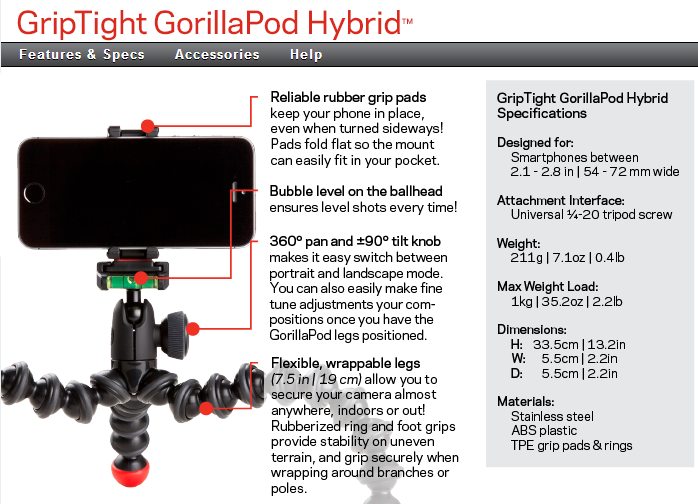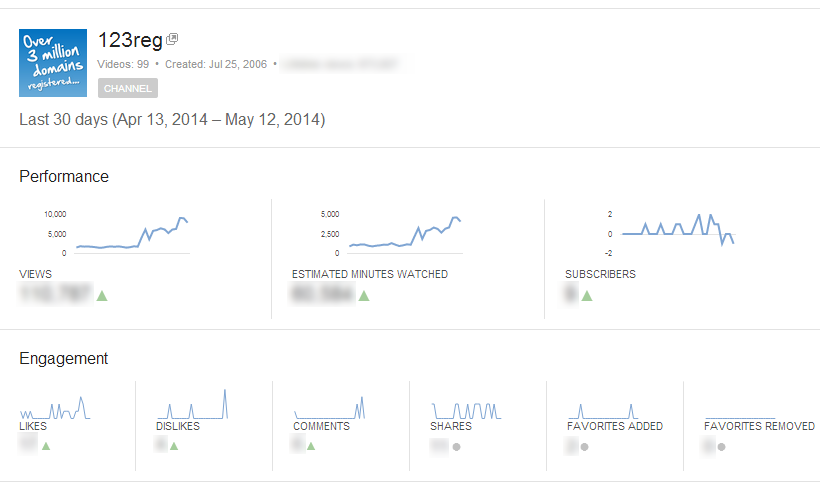A beginner’s guide to effective low-cost online video marketing
Online video is massive. BlinkBox, Netflix and YouTube exemplify the success of streaming. On YouTube alone, over six billion hours of video are watched each month, with 100 hours of footage uploaded every minute. But if you’re anything like me you probably don’t care how many millions of views other companies get, or how many hours of video people watch each week. Like anyone involved in business I care about what my customers are interested in. So when I see stats like the one from Animoto that shows 96 per cent of people find videos useful when making a purchasing decision, I take notice. And you should too.
Video is a powerful tool for any online business, but only if it’s harnessed in the right way. In this post I’ll explain how you can create quality video content on a small budget and, for the most part, using tools you already have at your disposal. Let’s get cracking.
Choosing a subject matter
Before you get down to the business of filming, you need to think about the topic(s) your videos are going to address. Concentrate on what customers want from you as a business and how you can use video to better meet their needs. Bear in mind that if you don’t have too much time, it’s best to focus on one area and do things really well, rather than spreading yourself too thinly. Here are the different areas to consider.
Testimonials
Video testimonials are great if you have loyal customers who want to sing your praises. Use them to instil confidence in potential customers and reassure them that your product/service will solve the problem it is supposed to. If you do use testimonials, make sure people don’t just say your company is great – get them to explain the problem they faced and how you helped them solve it.
Product videos
Another way to convince people that your product is right for them is by showing it in use. GoPro is a fantastic example of this – their YouTube channel is packed with videos of people making the most of their cameras. Not every product is as exciting as a GoPro, but that’s not the point. If you can show the items you sell doing what they’re supposed to do, it’s infinitely more powerful than a few hundred words of copy.
FAQ/Support videos
These types of video are closely tied to product videos. If your product seems difficult to use, you may want to create a video demonstrating how to get the most out of it. Alternatively, if you get the same question on a regular basis film something that addresses it. Again, the idea is to help customers feel comfortable when it comes to buying from you by showing you will be able to solve whatever problem it is they’re facing.
Blog-type videos
Videos are a great way to add extra personality to your blog as they let you communicate information in a way that isn’t possible in a text post. You can see me demonstrating this concept in our Swift Six series (below). If you decide this is what you want to do, bear in mind that this kind of video differs from the first three we’ve looked at. It’s still focused on solving problems and building trust, but it no longer provides information that relates directly to the company or one of its products. Instead, they’re used to build authority on a certain topic.
Social/promotional videos
These sort of videos are used to bring your company to the attention of people who may be interested in your products but don’t yet know you exist. Social and promotional vids allow you more freedom in terms of creativity – the aim here is to get attention, not sell a product. Again, this is something 123-reg has been exploring recently. Below is one of our social videos – notice how it differs from the Swift Six video. If you are tempted by social videos, bear in mind that this kind of campaign is hard to execute well and may not work on a small budget.
So which type is right for you? Well, no one will understand your business better than you, but in my experience videos in the product and FAQ categories are often the cheapest to produce and are a great way of encouraging people to buy from you. Those are the areas I would focus on, especially if you’re limited in terms of time and money.
The tools you’ll need
If you’re running an online business, the chances are you’ll already have at least one piece of kit that can be used to make a decent-quality video. If you’ve got a digital camera with an HD recording option, that’s great. A high-spec smartphone is likely to offer similar functionality, while even a top-end webcam will produce a finished product of acceptable quality.
If you’re using a camera or smartphone, you’ll need a tripod to keep things steady. Joby offers an affordable range of stands and mounts that will let you find a level surface no matter where you’re filming. If you’re using your laptop webcam, then it’s probably just going to be a case of balancing it on some books to make sure you get the most flattering angle.
Lighting is also a factor. At the very least you need to make sure you’re filming in natural light. This could be inside, as long as the room gets enough sun, or outside as long as it isn’t too noisy. If neither of these are an option and you have some budget, you can buy artificial lighting for around £100 this particular piece of kit is recommended by Phil Nottingham, who works on video projects at marketing agency Distilled.
You may also want to purchase a microphone depending on the sound quality offered by your recording device. The kind of mic you choose will be based on the sort of video you’re creating, but often you’ll find an inexpensive lapel microphone will do the job, especially if you’re just planning to create “talking head” videos.
If you’re not sure whether you need any additional equipment, create a short test video, assess its quality and use that to inform your decision.
Shooting
Your pre-shoot planning will vary depending on the kind of video you’re making, but for most self-shot videos a brief script will suffice. Don’t write everything out word for word – if you’re reading from a piece of paper the chances are you’ll sound and look wooden. Bullet points will keep you on track and allow you to express your passion and knowledge about the topic you’re covering. If you can’t memorise the points you’re going to cover, write them on a whiteboard and place it behind the camera so you’re not constantly looking away from your viewers.
It’s also a good idea to have someone there to operate the camera, even if they’re just pushing start and stop. It’s one less thing for you to worry about and they’ll also be able to offer an instant opinion on how things went.
Finally, you’ll want to give some thought to editing. My advice would be to aim for single-shot videos, especially when you’re starting out, as this means you won’t have to worry about splicing together different scenes. (It’s likely you’ll have to film more than one take to get things right, though.) However, you’ll probably need to do some editing, even if it’s just trimming off unneeded footage at the end of the video. TechRadar has a roundup of the best free editing packages, so try a few and decide which you like best.
Getting it on your website
Once your video is finished, you’ll need somewhere to host it so it can be easily embedded on your site. YouTube is perhaps the most straightforward option. Not only is it free, but it also allows you to build a community around your content. The only downside is that if people link to your videos, then they’ll probably link to YouTube, rather than your site. This means those links won’t bring any search engine optimisation benefits for your site. If this is a concern, you may want to consider Wistia – it’s a paid service, but it does allow you to make sure that anyone who wants to link to your videos has to link to your site.
If you want to see a Wistia embed in action, you can check out Whiteboard Friday on the Moz blog. You can then compare it to one of our Swift Six YouTube embeds to see which you prefer.
Finally, Vine and Instagram are worth a mention here. The fact that uploads are limited to a few seconds on both platforms mean they can’t be used for most kinds of video. But, if you’re creative, they’re a low-cost way to create and share social clips. Sports stat company Opta is a great example of this in action.
Promoting your videos
If you’ve created a social, promotional or blog video, the chances are you’ll want to ensure it is as widely seen as possible. One of the easiest ways to do this AdWords for video – essentially the video adverts you’ll have seen when watching content on YouTube. Google offers plenty of support to help you get a campaign up and running, so if you do decide to give it a try, it should be simple enough to get started.
You should also consider paid promotion through other social platforms such as Twitter and Facebook. We don’t have time to cover things in depth in this piece, but it’s certainly an area you should look into.
Measuring success
Exactly what constitutes success will depend on the kind of video you’ve created. At the very least you’ll want to look at plays and engagement – both Wistia and YouTube allow you to track a range of stats to see how many people have seen your video and how much of it they watched.
If you’re using AdWords for video, you’ll find it integrates with Google Analytics so that will allow you to measure the impact the ads have on your site. If you’re using other social channels, then make sure they tag up the links so you can track those through GA as well.
Finally, and perhaps most importantly, you should implement multi-channel funnels in GA so you can see if your videos have helped generate sales. Doing this will allow you to monitor the effectiveness of all video content, but it is especially useful when judging the effectiveness of videos that are designed to overcome doubts people might have about buying from you. Implemented properly, this should allow you to see the true power of video.



